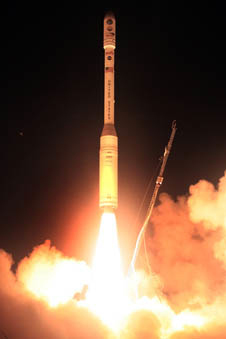The Orbiting Carbon Observatory, a $273 million satellite that would have collected measurements of carbon dioxide (CO2) in Earth’s atmosphere to help better forecast the climate impacts of changes in CO2 levels, crashed about three minutes after launch, reports NASA. Researchers say the accident is a major setback for science.
“NASA’s Orbiting Carbon Observatory satellite failed to reach orbit after its 4:55 a.m. EST liftoff Tuesday from California’s Vandenberg Air Force Base,” said NASA in a statement.
 NASA’s Orbiting Carbon Observatory and its Taurus booster lift off from Vandenberg Air Force Base. A contingency was declared a few minutes later. Image credit: Orbital Sciences Corporation |
NASA says preliminary indications are that the fairing vehicle — the clamshell structure that encapsulates and protects the satellite as it travels through the atmosphere — failed to separate. The weight of the fairing caused the rocket and the satellite to crash into the sea near Antarctica about three minutes later.
“Our whole team at a very personal level are disappointed,” said John Brunschwyler of Orbital Sciences Corporation at a news conference. “We are very upset with the results.”
“For the scientific community it’s a huge disappointment. There was such anticipation of this groundbreaking spacecraft that could measure the [climate change] issue on the front of our newspapers — it took a long time to get here.”
Last month, Japan successfully launched the world’s first greenhouse gas emissions monitoring satellite.














